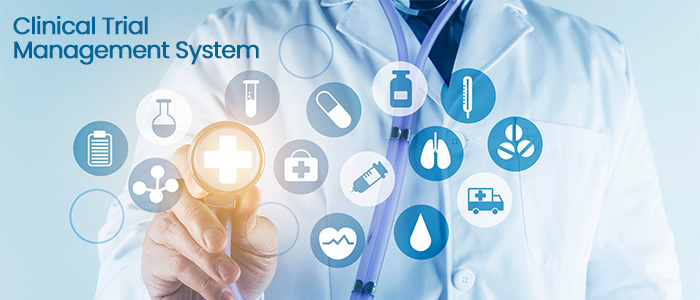Leveraging AI and Machine Learning in Clinical Data Warehousing
July 25, 2024 | Clinical Data Warehouse | No Comments
Leveraging AI and Machine Learning in Clinical Data Warehousing
Clinical data warehousing stands at a pivotal moment. The conventional methods of storing and managing enormous volumes of healthcare data are being transformed by the introduction of artificial intelligence (AI) and machine learning (ML). This shift is more than just an upgrade in technology; it’s a fundamental change poised to enhance accuracy, efficiency, and patient outcomes in healthcare.
A clinical data warehouse is a vast repository, brimming with medical records, lab results, imaging data, and more. This data is often enormous, intricate, and unstructured, making it a challenge to manage and analyse with traditional techniques. That’s where AI and ML come in. These technologies can process this massive data with remarkable speed and precision, uncovering patterns and insights that would take humans years to discover if they could at all.
Why This Matters: Speed and Accuracy
The implications of this transformation are profound. In healthcare, time and precision are paramount. A 2022 study revealed that AI-driven data processing could reduce analysis time by up to 70%. This is not just a time-saving measure; in many cases, it can mean the difference between life and death. For instance, in emergency settings where rapid diagnosis is crucial, AI can provide instant insights that expedite treatment decisions.
Consider the accuracy of AI in predicting patient outcomes. AI algorithms could predict hospital readmissions with an 85% accuracy rate. This predictive capability allows for better care plans, reducing the likelihood of patients returning to the hospital unexpectedly. Hospitals can proactively intervene, managing chronic conditions more effectively and improving overall patient health.
Real-World Applications
Real-world applications of AI in clinical data warehousing are already making headlines. The Mayo Clinic, for example, uses AI to analyze patient records and identify those at risk of severe complications. This proactive approach is saving lives. In 2023, an AI system flagged potential issues 30% faster than traditional methods, providing doctors with a critical head start in treatment planning.
Challenges: Data Privacy and Quality
But while the benefits are clear, integrating AI and ML into clinical data warehousing is not without challenges. Data privacy tops the list of concerns. Handling sensitive patient information requires stringent security measures. The Blackbaud data breach, which exposed the records of millions of patients, is a stark reminder of the risks involved. As we integrate AI, ensuring robust data protection is non-negotiable.
Quality of data is another significant challenge. The adage “garbage in, garbage out” applies here. If the data fed into AI systems is flawed or biased, the outcomes will be too. An incident underscored this issue when an AI model trained on biased data recommended less pain medication to Black patients compared to white patients. This highlights the necessity of diverse, accurate, and representative data sets to train AI models effectively.
Financial Benefits
Despite these challenges, the financial benefits of leveraging AI and ML in clinical data warehousing are compelling. An Accenture report projected that AI could save the U.S. healthcare industry $150 billion annually by 2026. These savings are primarily derived from reduced hospital stays, avoiding unnecessary tests, and streamlining administrative tasks. For instance, AI can automate routine administrative functions like billing and coding, freeing up healthcare professionals to focus on patient care.
Personalized Medicine with Human Oversight
AI and ML in clinical data warehousing are not just about efficiency and cost savings. They are also paving the way for personalized medicine. This emerging field tailors treatments to an individual’s genetic makeup, lifestyle, and environment, offering more effective and targeted therapies. AI algorithms can analyze a patient’s genetic information alongside their medical history to recommend the most suitable treatments. This is not science fiction; it is happening now.
However, it’s essential to temper our enthusiasm with a dose of realism. While AI is incredibly powerful, it is not infallible. Human oversight remains crucial. There have been instances where AI systems made errors due to a lack of context or an inability to understand the nuances that only human judgment can provide. For example, an AI system might misinterpret patient symptoms without the subtle context a human doctor might notice. This underscores the importance of integrating AI as a supportive tool rather than a replacement for human healthcare providers.
Ethical Considerations
The integration of AI and ML into clinical data warehousing also raises ethical questions. How do we ensure these systems are used responsibly and fairly? Who is accountable when AI makes a mistake? These questions need to be addressed as we navigate this new frontier. Regulatory frameworks and ethical guidelines must evolve alongside technological advancements to ensure AI is used in a way that benefits all patients equitably.
AI in Drug Discovery
Moreover, the pharmaceutical industry is leveraging AI in drug discovery and development. AI algorithms can analyze vast datasets to identify potential drug candidates faster and more accurately than traditional methods. For instance, in 2023, AI-driven drug discovery company Insilico Medicine identified a new drug candidate for fibrosis in less than 18 months—a process that typically takes years. This acceleration in drug discovery could lead to faster development of new treatments for various diseases, benefiting patients worldwide.
AI in Clinical Data: Enhancing Care, Safeguarding Humanity
The integration of AI and machine learning into clinical data warehousing is transformative. The benefits—speed, accuracy, cost savings, and personalized care—are substantial. However, we must navigate the challenges of data privacy, quality, and the need for human oversight. As we embrace this technology, ethical considerations and regulatory frameworks must keep pace to ensure that AI is used responsibly and fairly.
This journey is not just about technology; it’s about enhancing human capabilities and improving patient care. By leveraging AI and ML, we can unlock new possibilities in healthcare, making it more efficient, effective, and personalized. The future of clinical data warehousing, powered by AI, holds immense potential to transform healthcare as we know it.








